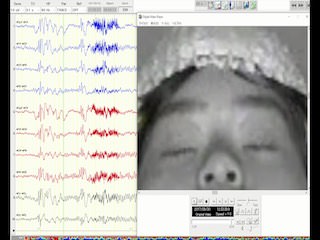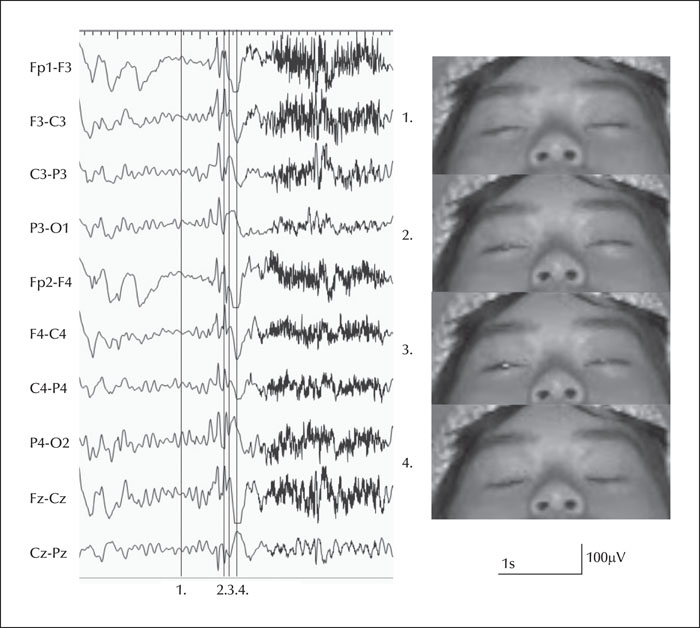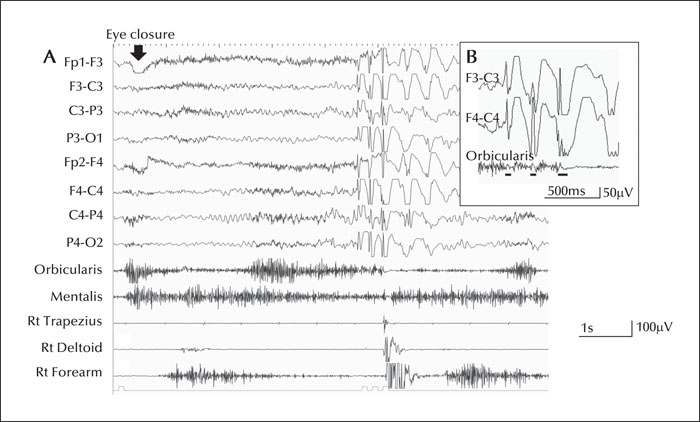Epileptic Disorders
MENUEyelid myoclonia with absences related to epileptic negative myoclonus Volume 23, issue 6, December 2021
- Key words: epileptic negative myoclonus, Jeavons syndrome, photosensitivity
- DOI : 10.1684/epd.2021.1350
- Page(s) : 917-21
- Published in: 2021
Eyelid myoclonia with absences (EMA) is an epileptic syndrome characterised by eyelid myoclonia with or without absences, eye closure-induced paroxysms, and photosensitivity. The relationship between EMA and epileptic negative myoclonus has not previously been reported. Herein, we describe a case of a 10-year-old girl who presented with eyelid myoclonia, eye closure-induced paroxysms, and photosensitivity, which was compatible with the diagnosis of EMA. Ictal EEG depicted an eye closure-induced diffuse 3.0-4.5-Hz polyspike-and-wave complex, which was accompanied by eye fluttering (eyelid myoclonia). EMG disclosed a brief interruption (60-140 mseconds) of tonic contraction of the orbicularis oculi muscle, which was associated with the polyspike-and-wave complex on EEG. The findings led to the diagnosis of epileptic negative myoclonus. Eye closure-induced eyelid epileptic negative myoclonus, demonstrated in this patient, may be an atypical seizure type of EMA that represents an intermediate between eyelid myoclonia and epileptic negative myoclonus.





